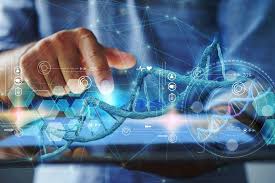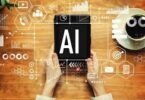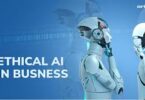AI in Healthcare: How Machine Learning Is Saving Lives
Artificial intelligence (AI) and machine learning (ML) are revolutionizing healthcare, transforming how diseases are diagnosed, treated, and managed. With the ability to analyze vast amounts of data quickly and accurately, these technologies are enabling breakthroughs in patient care, reducing errors, and improving outcomes. Here’s a closer look at how machine learning is saving lives in healthcare:
1. Early Diagnosis and Disease Prediction
- Enhanced Diagnostics: Machine learning algorithms analyze medical images, such as X-rays, MRIs, and CT scans, with remarkable precision. They help detect conditions like cancer, heart disease, and neurological disorders in their early stages.
- Predictive Analytics: ML models analyze patient data to predict the likelihood of diseases before symptoms appear, enabling preventive interventions.
Example: AI systems like Google’s DeepMind have demonstrated near-human accuracy in diagnosing eye diseases using retinal scans.
2. Personalized Treatment Plans
- Tailored Therapies: Machine learning creates personalized treatment plans by analyzing patient-specific data, such as genetic profiles and medical histories.
- Pharmacogenomics: ML helps predict how patients will respond to medications, reducing adverse drug reactions and improving efficacy.
Example: IBM Watson Health uses AI to provide oncologists with evidence-based treatment recommendations for cancer patients.
3. Drug Discovery and Development
- Accelerated Research: AI speeds up the drug discovery process by identifying potential drug candidates, optimizing chemical compounds, and predicting drug efficacy.
- Cost Reduction: ML reduces the time and cost of developing new treatments by streamlining clinical trials and analyzing vast datasets.
Example: Companies like BenevolentAI use machine learning to identify new drug targets and repurpose existing drugs for diseases such as COVID-19.
4. Remote Patient Monitoring
- Wearable Devices: Smartwatches and fitness trackers equipped with AI monitor vital signs like heart rate, blood pressure, and oxygen levels in real time.
- Predictive Alerts: ML algorithms analyze data from wearables to detect anomalies, allowing for early intervention in conditions like arrhythmia or sleep apnea.
Example: Apple’s wearable devices have helped identify heart irregularities, potentially saving lives through early detection.
5. Enhanced Surgical Precision
- Robotic Surgery: AI-powered robotic systems assist surgeons by providing real-time insights, enhancing precision, and minimizing invasiveness.
- Simulation Training: ML models create virtual environments for surgeons to practice and refine their skills before performing complex procedures.
Example: The da Vinci Surgical System uses AI to assist in minimally invasive surgeries, improving patient outcomes and reducing recovery times.
6. Streamlined Operations and Administration
- Efficient Scheduling: AI optimizes hospital operations by predicting patient volumes and allocating resources accordingly.
- Fraud Detection: Machine learning identifies anomalies in billing and insurance claims, reducing financial fraud in healthcare systems.
Example: AI platforms like Qventus use machine learning to streamline patient flow and reduce wait times in hospitals.
7. Mental Health Support
- AI Chatbots: Virtual assistants provide 24/7 support for individuals experiencing anxiety, depression, or other mental health conditions.
- Sentiment Analysis: ML tools analyze social media and communication data to detect early signs of mental health struggles.
Example: Woebot, an AI chatbot, offers cognitive-behavioral therapy (CBT) techniques to users in a conversational format.
8. Global Health and Epidemic Control
- Disease Surveillance: Machine learning tracks and predicts disease outbreaks by analyzing data from various sources, including social media, travel patterns, and weather.
- Vaccine Development: AI helps design and optimize vaccines by modeling virus behavior and immune responses.
Example: During the COVID-19 pandemic, AI tools like BlueDot identified the outbreak early and predicted its spread.
9. Reducing Diagnostic Errors
- Second Opinions: ML serves as a virtual assistant, providing doctors with a second opinion and reducing diagnostic errors.
- Decision Support: AI systems offer real-time recommendations during consultations, ensuring that healthcare providers consider all relevant information.
Example: Aidoc’s AI solutions assist radiologists by flagging critical findings in medical imaging.
10. Chronic Disease Management
- Continuous Monitoring: AI tracks patients with chronic conditions like diabetes, hypertension, and COPD, providing personalized recommendations.
- Behavioral Insights: Machine learning analyzes lifestyle data to suggest changes that can improve health outcomes.
Example: Livongo Health uses AI to support diabetes management by providing real-time insights and recommendations.
Challenges and Considerations
- Data Privacy: Ensuring the security of sensitive health data is critical as AI systems handle vast amounts of personal information.
- Bias in Algorithms: Addressing biases in AI models is essential to avoid disparities in healthcare outcomes.
- Integration with Existing Systems: Seamless integration of AI with traditional healthcare infrastructure remains a challenge.
The Future of AI in Healthcare
AI and machine learning are poised to transform every facet of healthcare, from prevention and diagnosis to treatment and recovery. As the technology continues to evolve, it holds the promise of saving millions of lives while making healthcare more accessible, efficient, and personalized.
Would you like to explore a specific application of AI in healthcare further?










Leave a Comment